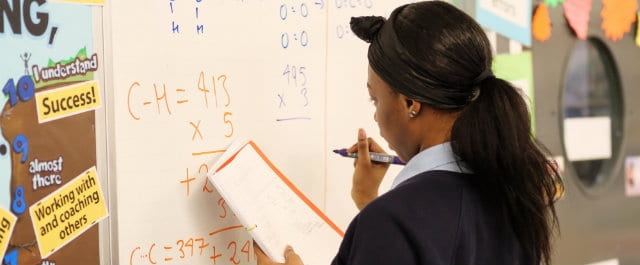PISA 2018 suggests gender gaps in reading are closing. But I am not celebrating
By Blog Editor, IOE Digital, on 14 January 2020

14 January 2020
Results from PISA 2018 reveal a persistent gender gap in favour of 15-year-old girls in reading. On average, across 35 OECD countries with comparable data, this gap was 39 points in 2009 but ‘only’ 30 points in 2018 – i.e. the gap narrowed by 9 points.
I should be celebrating, but I won’t. PISA results in fact suggest that, on average across OECD countries gender gaps in reading closed because the performance of girls declined, rather than because the performance of boys improved. Even more worryingly, the decline appears to be especially pronounced among poorly achieving girls.
One of the big stories that came out of the PISA 2009 round, my first encounter with PISA, was that reading performance improved in many countries and that such improvements were due, to a large extent, to improvements among lower achieving students. For me, what was significant was that many of the low-achieving students who improved were girls, so much so that, between 2000 and 2009 the gender gap in favour of girls in reading grew by 7 points, an increase mostly driven by a reduction of low-achieving girls.
The fact that the gender gap in reading narrowed between 2009 and 2018 should make me (and others) happy. After PISA 2009, I researched extensively boys’ underachievement in reading, which remains under-studied compared to the amount of attention that is devoted to examining girls’ under-representation in science, technology, engineering and mathematics (STEM). I have indicated that such underachievement is particularly pronounced at age 15 and can vary depending on characteristics of the test such as how it is delivered, how long it is and what types of reading material are used.
I also worked with policy makers in many countries, most notably Norway, trying to identify why boys perform less well than girls in reading and explore possible measures that could help to narrow the gender gap in reading.
Among the 35 OECD countries with available data (at this time, results have yet to be released for Spain), the average performance of boys was 472 in both 2009 and 2018. The average performance of girls was 511 in 2009 but 502 in 2018. The performance of the lowest achieving 10% of boys was 347 in 2009 and 336 in 2018, a decline of 11 points. The performance of the lowest achieving 10% of girls was 398 in 2009 and 378 in 2018, a decline of 20 points! Between 2009 and 2018 in as many as 8 of the 20 OECD countries that experienced a narrowing of the gender gap, this was due to declines in the performance of girls and a smaller decline or no improvements among boys.
To end with a positive note, however, I would like to invite those who are interested in examining gender gaps in reading to look in detail at data for the Czech Republic, Estonia, Ireland, Slovenia and Sweden. In these countries boys’ performance improved and girls’ performance remained stable or improved but less markedly than boys’ and the gender gap narrowed as a result.
While in my opinion Irish results should be considered carefully because 2009 results in Ireland were very low compared to other cycles, improvements in the remaining countries are noteworthy. They helped to narrow above average gender gaps in reading, they led to overall average improvements or, as in the case of Sweden, a marked change of course following years of declining performance.
In the United Kingdom, the picture is bitter-sweet: on average boys’ performance improved while girls’ performance remained stable, although boys’ improvement was not large enough to lead to a statistically significant narrowing of the gender gap. But an analysis of which boys improved reveals that the improvement was concentrated among middle and high achieving boys. In fact, high achieving girls were the group with the largest improvement overall.
 Close
Close



